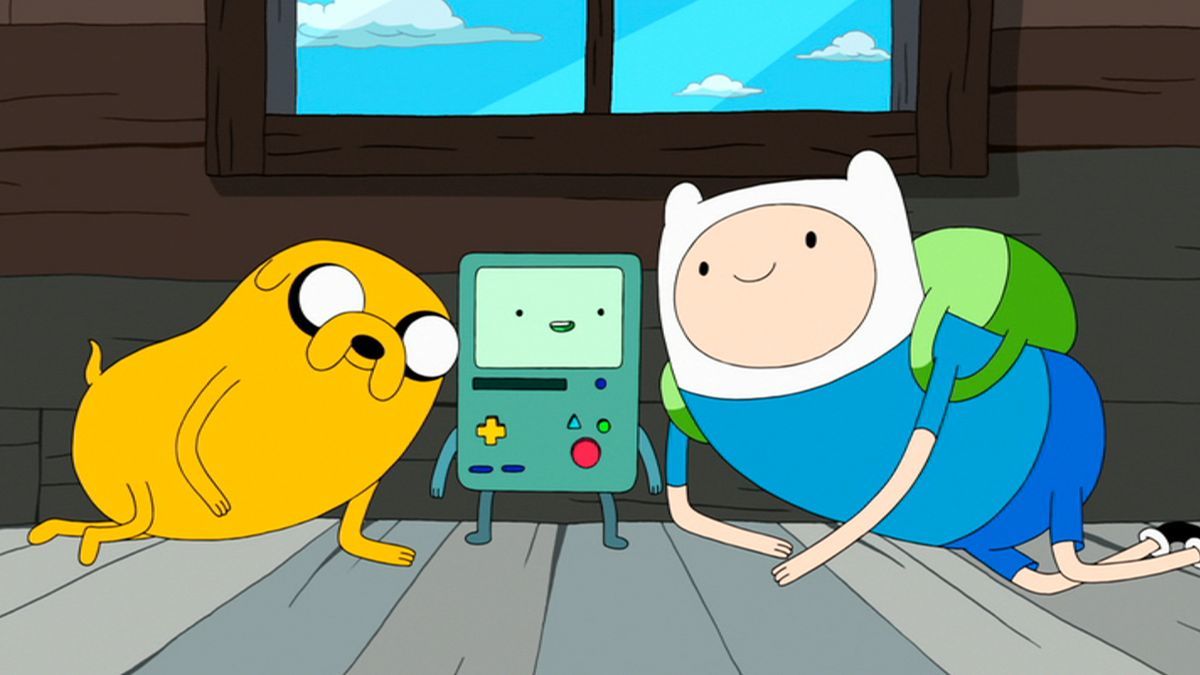Create a free profile to get unlimited access to exclusive videos, sweepstakes, and more!
The bizarre biology of Adventure Time's Jake the Dog

It’s been 10 years since we were introduced to Finn the Human and his colorful cast of friends in Ooo.
And Ooo truly was filled with an incredible cast of characters, all of which were nearly impossible not to love. Even the villains were lovable, because, in the end, they weren’t all that villainous, mostly just misguided. Adventure Time taught us that people are people, even if they’re sentient anthropomorphic candy, or hearts, or ice wizards. It taught us that people are complex and mostly good if you take the time to get to know them. There is, however, no character more lovable than Finn’s partner in crime and adopted brother, Jake the Dog.
Jake was the perfect adventuring companion, unfailingly loyal, infinitely encouraging, and he could shapeshift. Which had a seemingly endless number of uses, like transforming into a fleshy armored mech-suit, fitting into a pocket, or KEY HAND!
Jake’s abilities were something the show just asked you to accept. After all, in a world populated by vampires, sentient flames, adorable robots, and an entire kingdom of candy people, a shape-changing dog was really the least of our concerns when it came time to suspend disbelief.
For years, viewers were left to wonder how Jake came to have this ability. A reasonable assumption was that they came as a result of the Mushroom War, the apocalyptic event that transformed the world from the Earth we know into the whimsical world of Ooo. Others believed they were the result of magic, which is clearly demonstrated to exist. Jake, for his part, believed his powers came as a result of rolling in a mud puddle when he was a pup.
The ultimate answer arrived near the end of the series, in the episode entitled "Jake the Starchild." In the episode, we learn that Jake was born as a result of Warren Ampersand, a shape-shifting alien, biting Jake’s father on the head and transmitting his DNA. In short, Jake’s abilities are a genetic mutation, not post-apocalyptic or magical in nature.
This is good news for us, the viewers, because while we hope to avoid a great Mushroom War, I suspect most of us wouldn’t scoff at a shape-changing dog to pal around with. Which brings us to the ultimate question: If Jake were real, how would his body work?
BIZARRE BIOLOGY
Luckily for us, we have a couple of real-world animals we can look at as analogs for Jake’s unique abilities. The first place your mind might go, when it comes to animals changing shape, is the octopus. While they certainly do change their shape, owing to their almost total lack of bones, rendering them capable of squeezing into itty bitty spaces, we’re going to start a little closer to home.
We're gonna talk about worms. We’ll come back to octopuses later.
Worms are great. They just hang out in your soil, breaking down detritus and churning up the earth, not bothering anyone. Sometimes they come out to say hello when it rains, but mostly they keep to themselves. You can apparently eat them (fried or otherwise), though I’ve never tried it.
Anyone who was ever a kid (most of you, I suspect) and poked around at a worm on the sidewalk probably noticed they have a tendency to sort of pull into themselves.
When left alone, worms like to stretch out. They’re long and thin, with that weird sort of cut-off tube sock thing going on in that one part. But if you poke them, they get shorter and fatter; they pull into themselves and whip around in a frenzy.
This is one of the earthworm’s few defense mechanisms. Pulling into itself makes it a smaller target, and whipping around can scare off some predators or allow it time to escape into the dirt.
Earthworms accomplish this by way of their unique anatomy. An earthworm’s body is made of a series of connected segments. If you’ve ever taken a good look at a worm, you’ve probably seen them. They look sort of like living bendy straws. Each of these segments is filled with fluid and partitioned off from all other segments. In effect, the fluid in each segment is trapped there, ensuring that the volume remains the same in each segment at all times.
This is an important mechanism in the way earthworms move and change shapes. Think of those stress balls with the fluid inside. You can squeeze them and twist them. The volume always remains the same, but the shape changes. You can stretch them out or push all of the fluid to one side. This is essentially how earthworms change their shape. By utilizing one of two sets of muscles, one running along the side of the segments, and the other running around the wall, an earthworm can contract or expand each part of its body.
While we know from certain episodes that Jake does have a traditional skeleton, if we looked closely enough, we might not be surprised to find his body is comprised of a great many individual, fluid-filled segments and a complex muscular system. By using those muscles to shift fluid throughout those segments, Jake could change his shape in myriad ways.
However, we’ve also witnessed Jake changing into incredibly complex shapes. He’s not just getting longer and skinnier, or shorter and stockier. He’s twisting and looping, or hollowing himself out so Finn can jump inside. This behavior can’t be explained away simply by fluid-filled segments.
Despite all evidence to the contrary, Jake would need a complex and unique nervous system, which brings us back to the octopus.
The octopus is such a unique creature it almost seems as though it hales from someplace other than Earth. It has almost none of the structures we typically identify with recognizable animals; it has no bones to speak of, other than a beak it uses to violently dismember prey.
Octopuses move in a couple of ways. They can shoot jets of water out of a specialized organ to propel them, or they can use their eight limbs is nearly infinite variations. The limbs of an octopus are known as "muscular hydrostats," and they’re not actually all that alien. You have one yourself. The human tongue is strikingly similar to the arms of an octopus. While most of the muscles in your body are skeletal, using bones as an anchor, your tongue is totally different. It’s muscle pushing off muscle, and it uses shifting fluid in much the same way as the humble earthworm.
In a manner of speaking, octopuses are all tongue. Well, that, and brains. See, the octopuses movements are so complex, they can’t be controlled entirely by a central nervous system. Instead, each of the arms has its own bundle of ganglia capable of controlling that arm independent of the central brain.
Each of the octopus' arms literally has a mind of its own, at least sometimes. Researchers have observed an octopus moving all of its arms in sync and believe that when that is happening, those movements are controlled by the central brain. But if an arm acts out of sync with the rest of the body, it's likely being controlled by a smaller brain in the tentacle itself.
It’s a different sort of intelligence altogether. While vertebrate animals are mostly top-down thinkers, with the brain taking in stimuli, making decisions, and giving orders to the rest of the body, octopuses can be tentacle-up.
It’s an important adaptation that allows an octopus to react to a situation more quickly, without consulting the brain.
Which might explain some of Jake’s behavior. In order to regulate the complex movements his body is capable of, he very likely has to have a set of smaller brains controlling at least some parts of his body. And can he be blamed if he sometimes acts erratically? After all, he might be behaving without his mind even being aware of it at the time.
We don’t yet have a totally clear understanding of how the body and brains of an octopus work. Likewise, we’ll probably never know exactly how Jake works. But we’re glad he does. A human boy couldn’t ask for a better friend.














